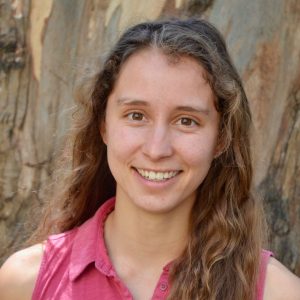Congratulations to the poster prize winners of ‘Innate immunity in host-pathogen interactions’
The recent EMBO | EMBL Symposium ‘Innate immunity in host-pathogen interactions’ brought together a diverse community of scientists to explore the rapidly evolving field of pathogen infection. Building on the success of the past four editions, this year’s conference provided a dynamic platform for the exchange of cutting-edge ideas and fostered cross-disciplinary collaborations among researchers with distinct perspectives.
Out of 125 posters presented in the EMBL Advanced Training Centre, the following three poster prize winners stood out for their exceptional work. Congratulations to Arda, Charlotte, and Maximilian!
RNF213 couples nucleotide sensing with antimicrobial function
Presenter: Arda Balci
Authors: Arda Balci, Adam Fletcher, Juray Ahel, Satpal Virdee, Tim Clausen, Nicola Wood, Victoria Faas, Roosa Harmo, Frederique Lamoliatte

Abstract:
Pathogen sensor proteins respond to specific cues, termed ‘damage-/pathogen-associated molecular patterns’ (DAMP/PAMP). RNF213, an E3 ubiquitin (Ub) ligase, crucially depends on its ATPase Associated with diverse cellular Activities (AAA) domain integrity for recruitment to pathogens and antimicrobial function. To investigate which step of RNF213 function is ATP dependent, we developed a novel method to profile intracellular E3 activity and find that adenosine nucleotide binding regulates the RNF213 E3. We also adapted an intracellular ATP biosensor to monitor ATP levels during an interferon response, and to visualize ATP levels at subcellular sites of RNF213 recruitment. Combined, we hypothesise that ATP displays PAMP-like properties, regulating RNF213 cysteine-dependent E3 activity in a pathogen-independent manner.
Due to the confidentiality of the unpublished data, we cannot share the poster.
Investigating the role of Shigella effectors and host inflammatory pathways in a mouse model of shigellosis
Presenter: Charlotte Langner
Authors: Charlotte Langner, Kevin Eislmayr, Janet Babirye, Duke Yuvaraj, Kyungsub Kim, Cammie Lesser, Russell Vance

Abstract:
Shigella is a human-adapted enteric pathogen responsible for an estimated 80-150 million cases of shigellosis and 250,000 deaths per year. Shigella uses a type III secretion system (T3SS) to deliver effector proteins into host cells. These effectors enable invasion of and replication within intestinal epithelial cells (IECs) as well as evasion of host immune defenses. Due to a lack of animal model, most studies of Shigella effectors have been done in cell culture in vitro. The Vance lab recently found that mice lacking the NAIP-NLRC4 inflammasome, an innate immune sensor, develop an inflammatory disease upon infection with Shigella that recapitulates hallmarks of human shigellosis including weight loss, bloody diarrhea, intestinal neutrophil infiltration, and bacterial replication within IECs. Here, we use this model to investigate the function of Shigella effectors in vivo and show substantial redundancy among bacterial effectors. We will describe our efforts to determine the role of Shigella effectors in modulation of NF-kB and the host inflammatory response.
Due to the confidentiality of the unpublished data, we cannot share the poster.
The fate of flagella during invasion of host cells by Salmonella enterica
Presenter: Maximilian Lehmann
Authors: Maximilian Lehmann, Malte Kellermann, Michael Hensel, Marc Erhardt

Abstract:
Salmonella enterica is a well-studied, prevalent foodborne pathogen and is classified into non-typhoidal (NTS) and typhoidal serovars (TS) based on the clinical outcome in humans. Both TS and NTS employ a variety of virulence factors, including flagella, adhesive structures, and the Salmonella pathogenicity island 1 (SPI1)-T3SS, to efficiently invade epithelial host cells. It is widely recognized that NTS, such as S. Typhimurium (STM), suppress flagella gene expression immediately after host cell invasion and remain non-motile in the early stages of infection. In contrast, human-restricted TS S. Paratyphi A (SPA), exhibit intracellular flagella-mediated motility and upregulation of flagella gene expression in human epithelial cells. Despite the observed variations in the pathogenesis of TS and NTS, the underlying mechanisms of intracellular flagella gene expression and the fate of flagella during host cell invasion remain largely unknown.
Here, we demonstrate that both STM and SPA lose the majority of their flagella during host cell invasion. However, SPA is able to retain flagella, enabling intracellular, cytosolic motility. Furthermore, we provide evidence that intracellular motility is not confined solely to the cytosol but can also be observed within the Salmonella-containing vacuole (SCV) shortly after bacterial engulfment. Based on these observations, we hypothesize that SPA utilizes flagella-mediated motility as a means to actively escape the SCV and access the more nutrient-rich host cell cytosol.
Due to the confidentiality of the unpublished data, we cannot share the poster.
The EMBO | EMBL Symposia ‘Innate immunity in host-pathogen interactions‘ took place from 18 – 21 June 2024 at EMBL Heidelberg and virtually.